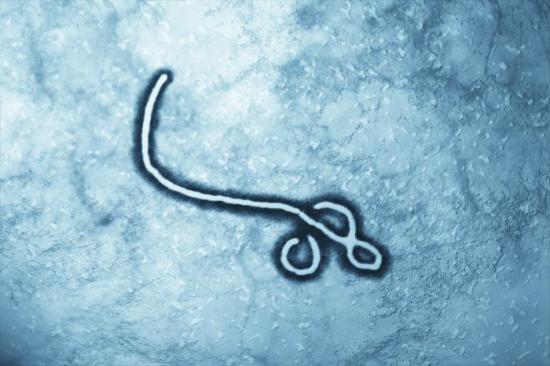You are here
Ebola's ability to survive in the environment poorly understood
Primary tabs
MEDICAL NEWS TODAY Dec. 11, 2014
The means by which Ebola virus transmits through direct contact with body fluids of infected individuals is well covered in scientific literature. But little is known about the life the virus has - if any - outside the body. For example, does Ebola remain active on glass surfaces and countertops? Does it persist in sewage and wastewater systems?
Such questions are rarely addressed in currently published literature, say engineers from the University of Pittsburgh (Pitt) and Drexel University, Philadelphia.

A team of engineers says scientific literature contains little information about how well Ebola survives outside the body. They call for research to investigate its persistence in the environment so correct guidance can be given on disinfection and waste handling.
They report their findings - or lack of them - and why it is important to find some answers, in a paper published in the journal Environmental Science & Technology Letters....
The size and scale of the epidemic have raised significant unanswered questions for the scientific and engineering communities, as well as the general public - questions about "Ebola virus persistence in the environment and the potential for an environmental route of Ebola virus exposure," note the authors.
Link to Enviornmental Science and Technology paper
http://pubs.acs.org/doi/abs/10.1021/ez5003715



Comments
Research - Ebola's Ability to Survive in the Environment
A list of research studies and articles on Ebola's ability to survive in the environment:
Vectors, Hosts, Fomites and Food….The challenge of controlling Ebola in West Africa
http://resiliencesystem.org/vectors-hosts-fomites-and-food%E2%80%A6the-challenge-controlling-ebola-west-africa
Assessment of the Risk of Ebola Virus Transmission from Bodily Fluids and Fomites
http://resiliencesystem.org/assessment-risk-ebola-virus-transmission-bodily-fluids-and-fomites-0
Ebola can last on surfaces for almost TWO months, tests reveal
http://resiliencesystem.org/ebola-can-last-surfaces-almost-two-months-tests-reveal-daily-mail-online
Research - Ebola Hemorrhagic Fever Transmission and Risk Factors of Contacts, Uganda
(with references to fomites) – (8 page .PDF file)
http://wwwnc.cdc.gov/eid/article/9/11/pdfs/03-0339.pdf
Research - The survival of filoviruses in liquids, on solid substrates and in a dynamic aerosol
(the virus is capable of living in dried blood on various surfaces -- such as plastic and glass -- for as long as three weeks in low temperature environments)
http://www.ncbi.nlm.nih.gov/pubmed/20553340
Footnote 61 - (no virus samples survived on plastic, metal or glass surfaces at room temperature)
http://www.phac-aspc.gc.ca/lab-bio/res/psds-ftss/ebola-eng.php#footnote61